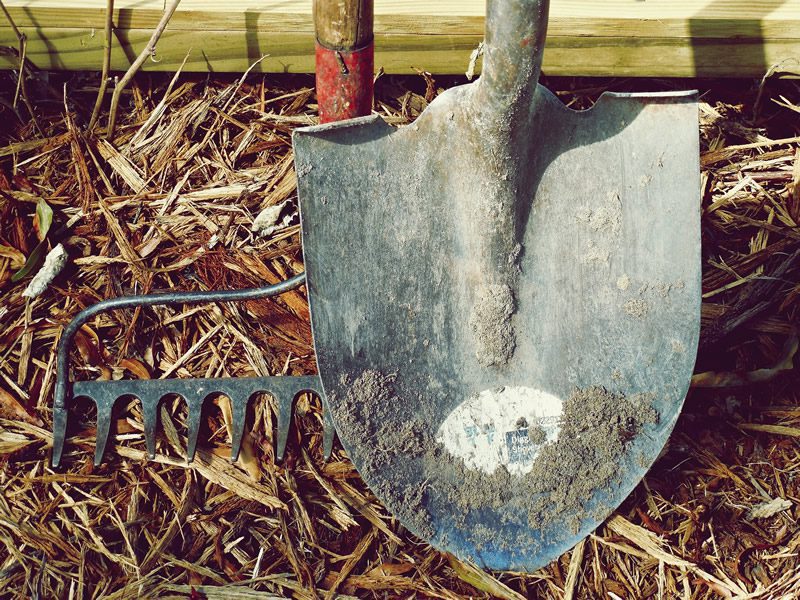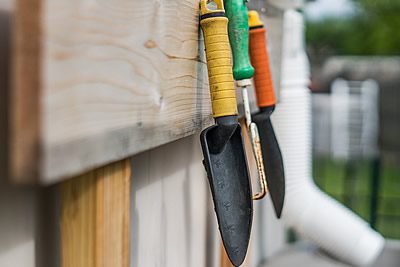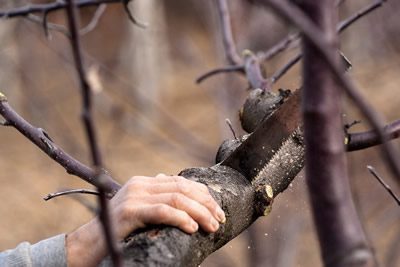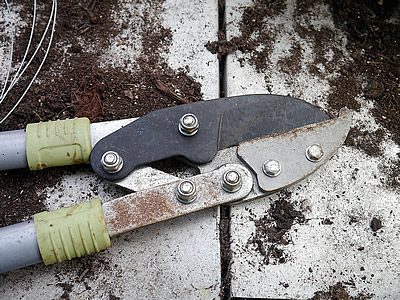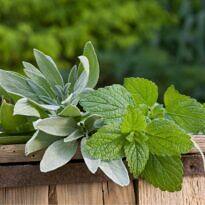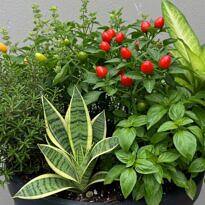Quality tools and equipment can be expensive and are designed to last for many years, but they require regular care and maintenance. While you could opt for cheaper tools, in that case, maintenance becomes a minor concern since you can simply discard them when they wear out. However, as a conscientious and environmentally engaged gardener, I believe that’s not your choice.
Regardless, caring for your gardening tools regularly ensures they’re ready to work whenever you need them. Following a few tips will add many years of life and use to all your tools.
In addition to greater durability, well-maintained tools offer advantages such as:
- Ease of use, requiring less effort and strain for the gardener;
- Precise cuts that don’t damage plant tissues;
- Reduced spread of pests and diseases among plants since the tools are clean;
- Decreased pests and dirt in the tool storage area.
Tips for Tool Maintenance:
- Start thinking about tool maintenance at the time of purchase. Rubberized handles, stainless steel blades, sturdy springs, and screws. Ergonomic handles are made of good-quality wood or durable plastic. Avoid tools with iron blades or cheap plastic, enamel-coated paint that chips, and fragile wooden handles suitable for crates. This not only simplifies maintenance but also enhances tool use and comfort. Look for reputable and traditional brands, whether national or imported and seek the seller’s opinion. Agricultural supply stores and garden centers usually offer more options than supermarkets.
- Prefer buying individual tools based on your needs rather than pre-assembled kits, which often include tools you won’t use. Pruning shears require special care since poor blades easily dent, chip, and become ineffective, requiring replacement soon.
- Regularly wash shovels, forks, rakes, diggers, and hoes with running water immediately after use. Use a hard-bristle brush or spatula to remove hardened clumps of soil. Soaking them in a bucket of damp sand can be a quick way to remove dirt.
- Pruning tools like shears should be brushed and washed with water and soap. Use a small nail or toothbrush for thorough cleaning.
- If the tools have been exposed to plants suspected of diseases or soil infested with pests like nematodes, sterilize them by soaking all of them in a solution of one part bleach to two parts clean water. Alternatively, wipe them down with common cleaning alcohol.
-
Plastic tools can be either good or poor in quality. Choose wisely. After cleaning and fully drying, it’s time to lubricate. An important detail here: Avoid petroleum-derived mineral oils, like machine oil and others. These oils are great for preserving tools but contaminate the soil and harm your garden. Similarly, common vegetable oils are not recommended as they become sticky over time, hindering the movement of tool parts. The holy grail of garden tool lubrication is linseed oil. It doesn’t have to be virgin oil; the same type used for car care works. Linseed oil creates a protective film between metal and air, preventing oxidation and rust formation. It also hydrates wooden handles, increasing their lifespan and enhancing their appearance. Best of all, it’s environmentally friendly. Apply it along the tool’s entire length using an oil-soaked cloth. Remove excess if necessary. Wash the cloths afterward, as dry, oil-soaked cloths can become potentially flammable.
- Store the tools in a dry, well-ventilated shed or garage. Smaller hand tools can be stored in a bucket of sand or pebbles, while larger tools should be hung or stored upside down. A perforated hardboard panel can be an excellent option for hanging your tools on hooks, making them visible and easily accessible.
- Scissors, knives, and cutters must be cleaned of sap because besides becoming a contamination source, they become difficult to use. Plant sap tends to stick like glue to blades. One tip is to work with a cloth and alcohol nearby while using the tool, and regularly clean the blade, especially when working with plants that produce thicker sap. If the sap dries, you can remove it with solvents like turpentine, thinner, or kerosene.
-
Select the right tool size for each function. The best way to prevent rust is to ensure tools are completely dry before storing them and to treat them with linseed oil. However, if you encounter rust, you can take measures to remove it, halt its progression, and restore your tools. Soak them in a solution of one part alcohol vinegar and one part water for about 12 hours. Then, scrub with steel wool in circular motions. Rinse with water and soap. Allow them to dry completely and remember to apply a generous layer of linseed oil.
- Annually, disassemble and thoroughly clean pruning shears. This task is ideal for winter when garden tasks lessen and you’ll store the tools for an extended period. This way, they’ll be ready for the many pruning tasks that come with spring.
- Unscrew the shears to open them up, and meticulously wash all parts with a brush, water, and soap. Be careful not to lose any components.
- Submerge the pieces in a vinegar and water solution for 12 hours. Scrub the parts with steel wool to remove any rust spots. Rinse and dry.
- Sterilize the tools in a solution of bleach and water for 15 minutes. Rinse and dry.
- Once completely dry, apply linseed oil with a cloth. Wipe off excess oil and reassemble the shears.
-
Remove rust from pruning shears and loppers annually. Cutting or pruning with dull blades often results in splintered branches with chewed-up tissues, making them more susceptible to diseases. It also makes the task much harder, demanding extra effort and causing unnecessary pain and calluses. When using pruning tools, remember that each tool is suitable for a specific type of branch. Don’t use shears on woody and thick branches; use a saw instead. Similarly, tender and soft stems can easily be cut with a utility knife or blade, eliminating the need for shears.
- You can sharpen your tools at home or have them professionally sharpened. Many companies and professionals offer this service quickly with appropriate equipment at a very low cost. If you’re skilled and knowledgeable about usage, you can use a sharpening stone for quick edge maintenance on cutting blades and spades. If you’re comfortable, an angle grinder can also be used for sharpening.
- Don’t forget to care for wooden handles as well. Small cracks can be reinforced with heavy-duty tape like duct tape. Any handle with severe cracks should be replaced as soon as possible to prevent accidents and injuries if it breaks during use. Before each use, carefully inspect for cracks, especially near the blade attachment. Annually, lightly sand and apply linseed oil to condition the tool handles.

